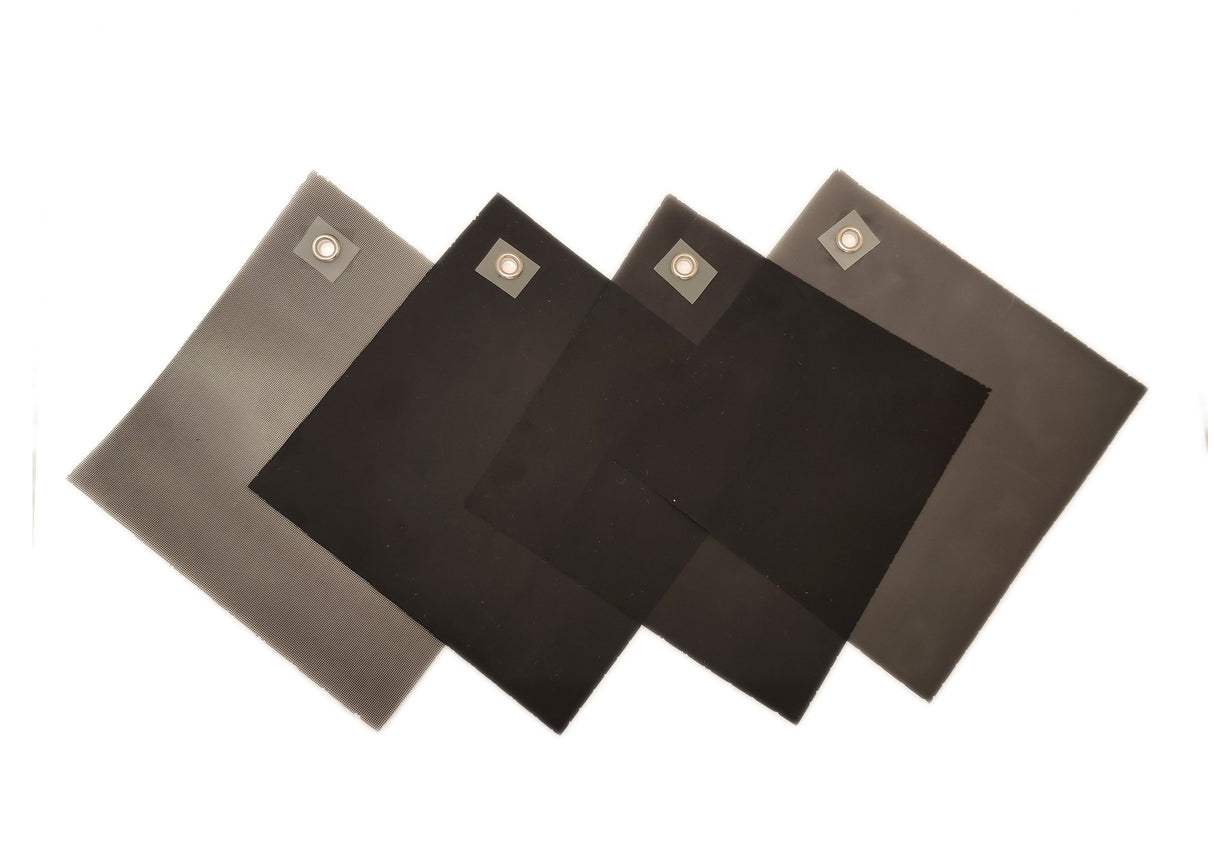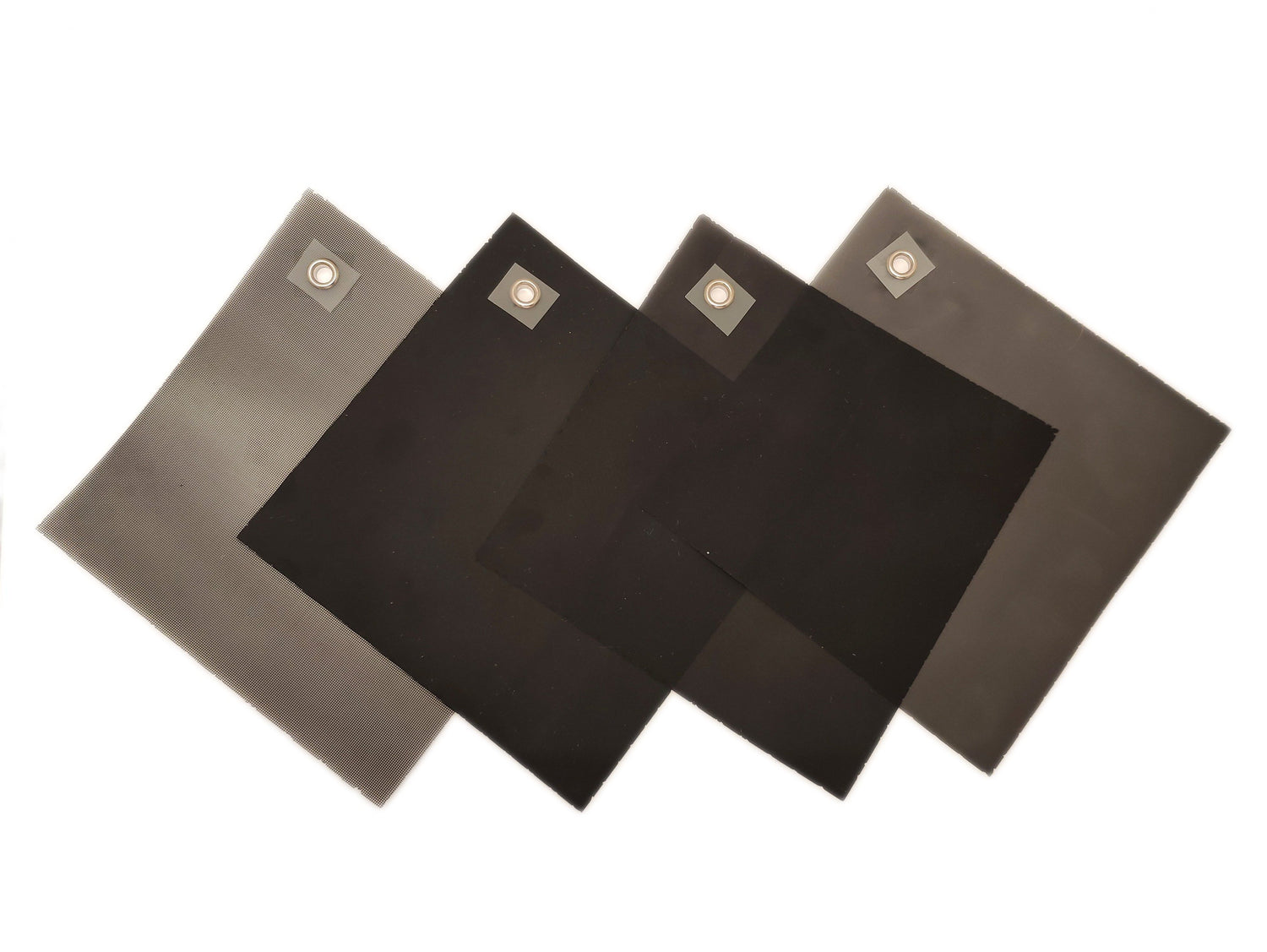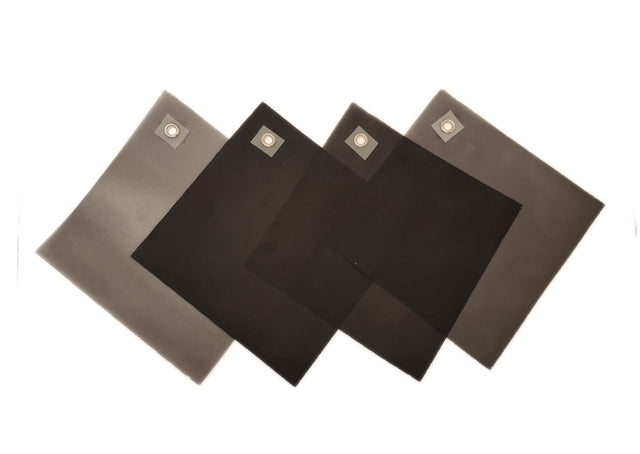Product category: Textile
Hydrophobic Acoustic Mesh
Allows air to pass, but stops water.
This fine mesh is precision-woven of a smooth polyester plastic (PET) monofilament and treated with a hydrophobic coating. It allows air and sound to pass but stops water, dust, and other contaminants. Be aware that water under pressure is able to can pass through the mesh. The mesh restricts airflow (and thereby sound) less than meshes and fabrics made from spun yarns and the mesh, therefore, has a high and consistent acoustic transparency.
What are Hydrophobic Acoustic Meshes used for:
The mesh is placed in front of speakers and microphones to improve sound quality and protect against dust and water. It is widely used on mobile phones and earphones.
More information:
The mesh is available with pore sizes from 7 μm to 285 μm in a range of colours. It can be coated with metal to shield electronics against electrostatic discharge (ESD) and protect cellphone users from electromagnetic waves.
Inspiration for new applications:
Create covers for portholes on boats to allow fresh air to pass while stopping sea sprays.
Test it:
Try dripping water on the samples.
Hydrophobic Acoustic Mesh - 11 cm x 11 cm // 4.3 inches x 4.3 inches is backordered and will ship as soon as it is back in stock.
The sample you get:
Estimate the shipping cost
Questions & Answers
Have a Question?
-
I want to use this to put over a window fan to block light but allow air to pass through, will this reduce airflow too much and does it block light?
The amount of both air and sunlight that passes through the mesh depends on the pore size of the specific variant of the material. You will have to test different variants in order to evaluate if it works for the intended application.
-
I am looking for a fabric in order to protect a microphone array from the rain. The fabric should be sound transparent and waterproof. Do you have a fabric that can satisfy these requirements?
The hydrophobic acoustic mesh is made for exactly this type of application. But be aware that water will pass if the textile is subjected to direct heavy rain or water under pressure.
-
I want to drill ventilation holes in an old Macbook and use this material to cover the holes. Is it possible to attach it to the inside of the holes with tape?
We only sell the material sample you see on the webshop. You can cut the shapes you need with a laser cutter and attach the adhesive yourself. You need to find a company who does "tape conversation" and assembly to have larger quantities made.
-
Is this hydrophobic mesh fire retardant?
No. It is made of conventional plastic, so it will burn like a plastic film if ignited.
-
Can you provide me with a data sheet for the material ?
The sample we offer is used by product developers, inventors, and designers to get a feel for the material and to do small experiments. The information card which is attached to the sample includes contact information for the material supplier, who can provide data sheets for the many different variants that are available.
-
Does this product also provide protection from humidity passing through the fabric?
No. It is the surface tension of the water that stops water from passing through the hydrophobic textile. Water molecules within the air (aka humidity) will pass through with the air.
-
Which of these products would allow the maximum air flow? The intended use is for a vent on an aircraft which will allow air to enter the cabin but keep rain out.
The air flow is inversely proportional to the ability to keep water out. Therefore, if you desire high air flow, you need a mesh with a large open area, which will, in turn, increase the risk of water penetration.
There is a broad range of variants of the material, with differences in the diameter of the individual threads and the thread count. The sample includes an attached information card that provides contact information for the material manufacturer. They can assist in selecting the most suitable variant for your application.
-
Can this fabric be easily cut with a knife or scissors? How can it be fixed to metal?
It is a soft textile, so it is very easy to cut with a sharp pair of scissors. It can be fixed to other substrates mechanically, with adhesive tape, or by gluing it.
Your payment is processed by Shopify or Paypal - We do not receive or have access to your credit card information.




